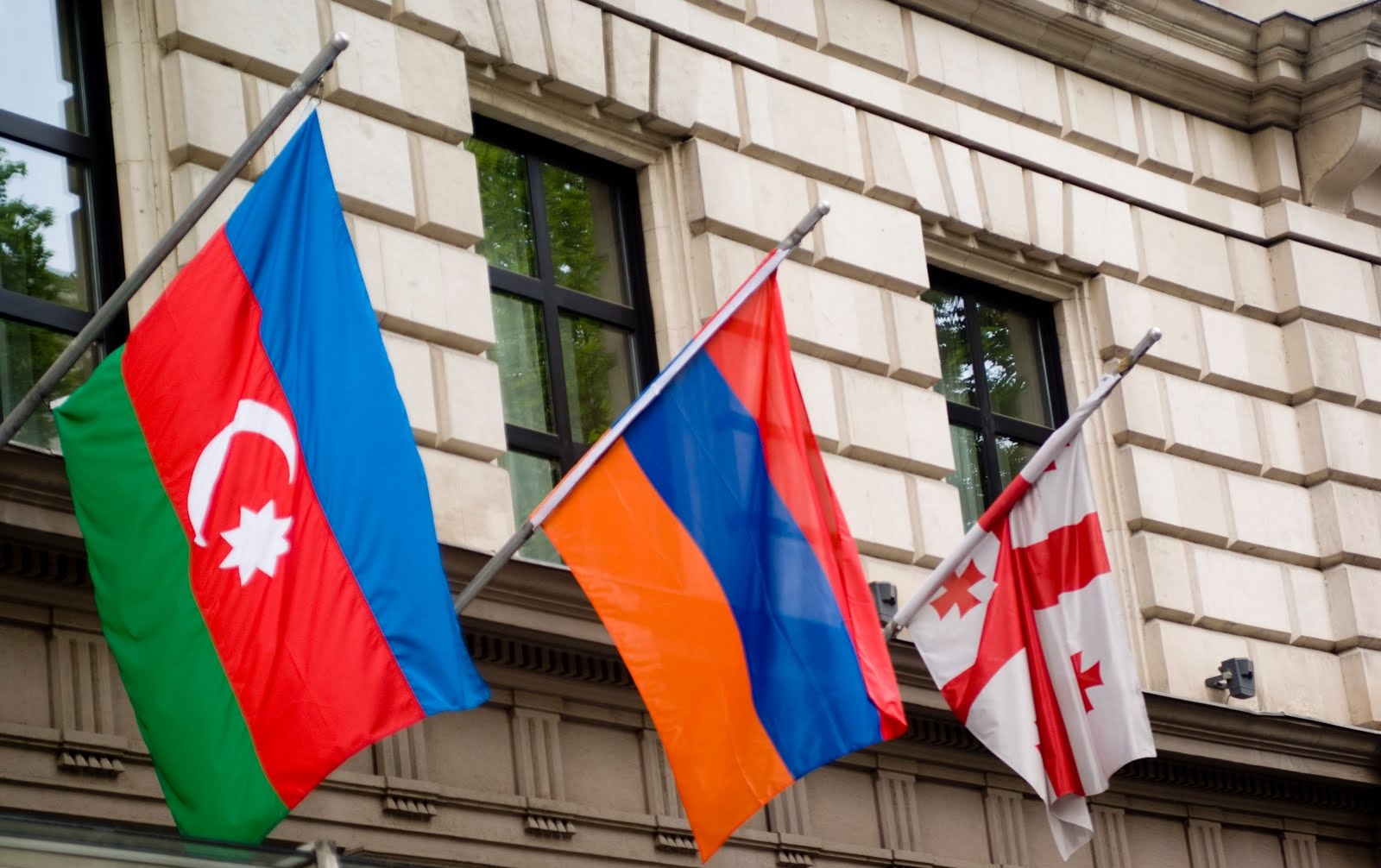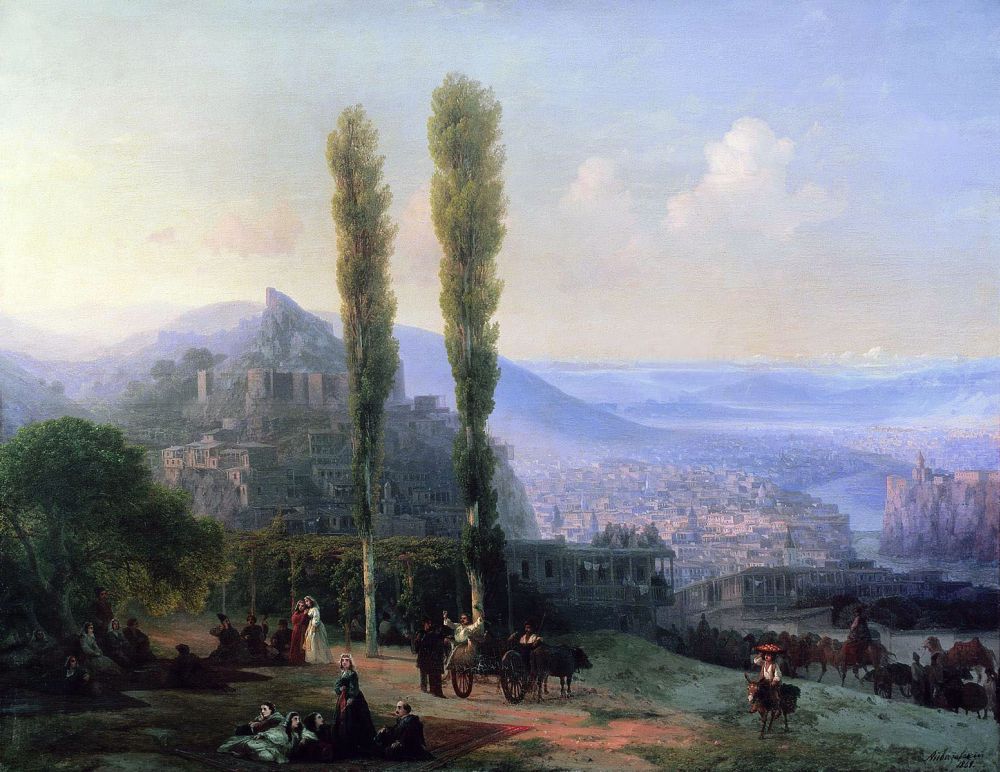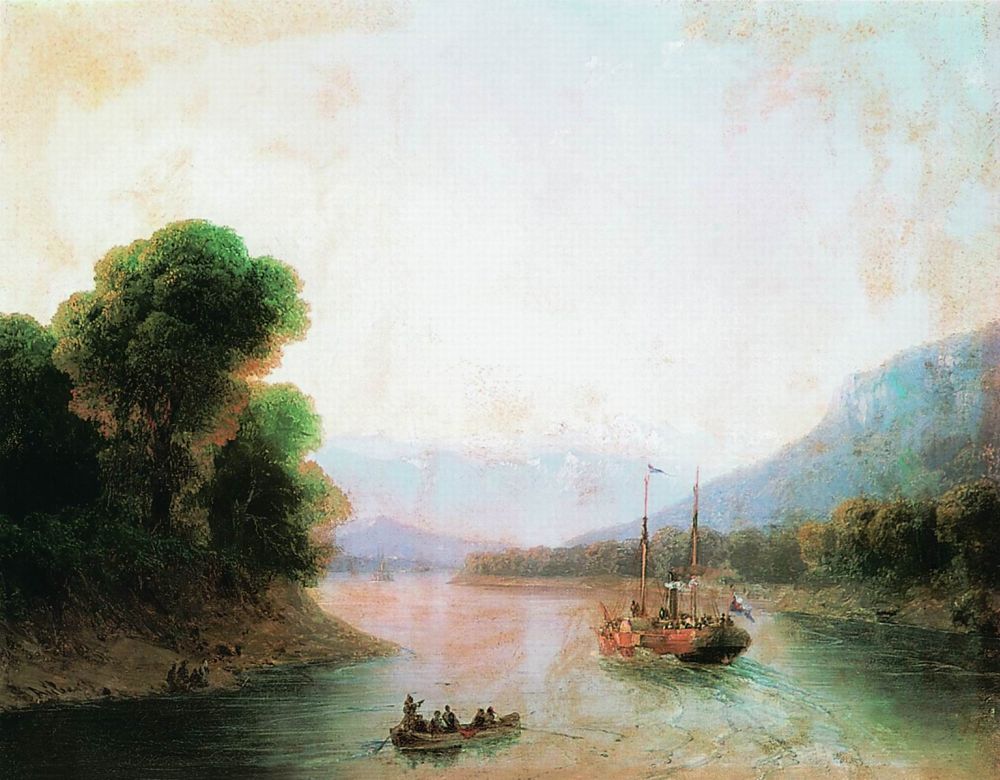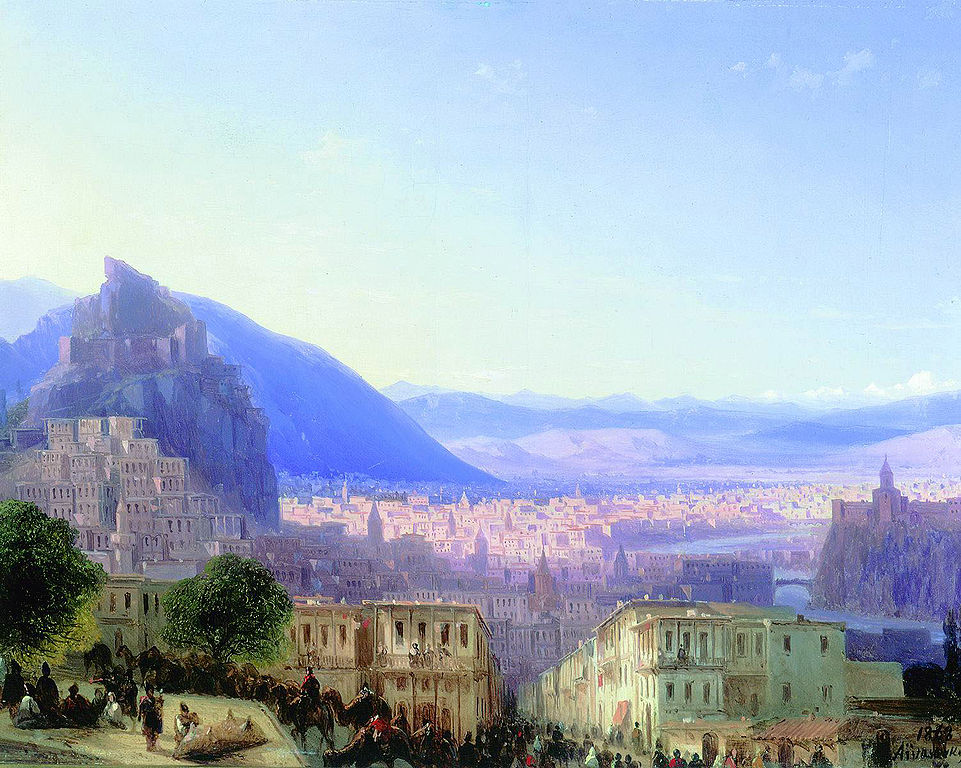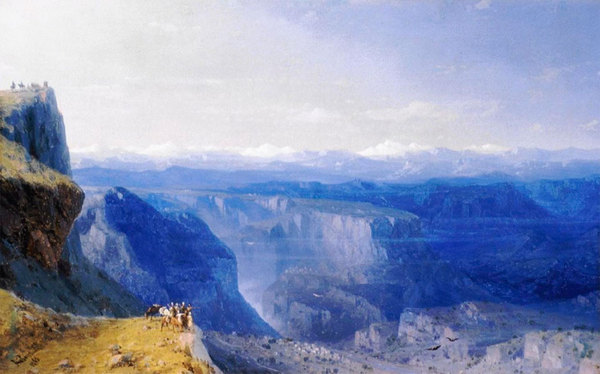Aivazovsky in Tiflis The silence of his home became unbearable. Once gay, filled with the happy voices of his girls, the house now stood silent and sad. The paintings still hung on the walls, the flowers in the vases were changed every morning, the chandeliers in the living room and study were lit in the evenings, and friends and acquaintances came. As before, he was friendly and attentive. He carefully hid his suffering from prying eyes. To drown out the bitter thoughts of a failed family life, he decided to go on a long journey. In 1868, the artist traveled to the Caucasus and Transcaucasia. On all sides it was surrounded by majestic mountains with inaccessible snow-capped peaks, deep gorges, and tumultuous waterfalls. This harsh, as it were primeval nature won the imagination. The road album was quickly filled with sketches and drawings. Aivazovsky liked Tiflis. He set up a workshop there and settled down for the winter. Soon the artist started working. He transferred the views of the Caucasus that struck him to the canvas with his usual virtuosity and speed. Numerous acquaintances came to the workshop. In this large southern city, people are sociable and get to know each other quickly. The famous Maestro's stay in Tiflis was an important event. Even the cabs moved their Parking lot to the house where Aivazovsky lived: so many people went to him. When the artist showed himself at the entrance, dozens of cabs with unusual dashing served their carriages. All of them envied the one in whose carriage Aivazovsky got on. Such a driver became popular in Tiflis for a day or two. He was surrounded by dozens of people and demanded that he retold many times what Aivazovsky had said to him during the walk. Everyone in Tiflis knew that Aivazovsky wrote views of the Caucasus. This was talked about not only in the homes of enlightened people, but also at every intersection, in every wine cellar, where the regulars argued, made bets, told fantastic anecdotes. Almost all the arguments and anecdotes concerned the speed with which the artist writes his paintings. And he really worked especially fast this winter. In a short time, he painted twelve paintings. Many of Ivan Konstantinovich's new acquaintances watched his work, and more than once the Studio resounded with enthusiastic shouts: high mountains, gorges, waterfalls, and stormy rivers of the Caucasus appeared on the recently clean canvas… The artist was looked at with awe. He seemed to many to be a wizard who obeyed the seas, rivers, and mountains. In Tiflis, they were sure that all he had to do was pick up a brush and call out to a high mountain, a waterfall, or a stormy mountain stream that appeared in his imagination: "Don't move!— - how they obey the order of a genius and appear immediately on his canvas. Finally, the news spread through Tiflis that Aivazovsky was opening an exhibition. The audience saw the pictures: "Chain of the Caucasus mountains", "Coast at Poti", "Mount Ararat", "East coast near Sukhum", "Rion River", "Gunib from the East side", "Daryal gorge", "Snowfall at Kazbek on the Georgian Military road", "lake Sevan", "Tiflis". Tiflis residents never tired of admiring the views of the Caucasus in Aivazovsky's paintings. Those who had the good fortune to see the artist's marinas before said that only the singer of the sea element can convey the greatness of the Caucasian nature. The exhibition was visited by most of the residents of Tiflis. The entrance fee was a significant amount. The artist announced that he was transferring all the money for the needs of the city children's shelter. This caused a new storm of excitement. Tiflis residents highly appreciated the artist's responsive heart and broad, unselfish nature. Now, on the streets of the city, strangers took off their hats and bowed low to Ivan Konstantinovich. Author: Wagner, Leo A.
-
Good Life
-
About Georgia
-
Tours
-
- Hot offers
- View all offers
-
- Other service
- Booking
- Booking of transport
- Services of guides / interpreters
- Insurance
- Subscribe
-

